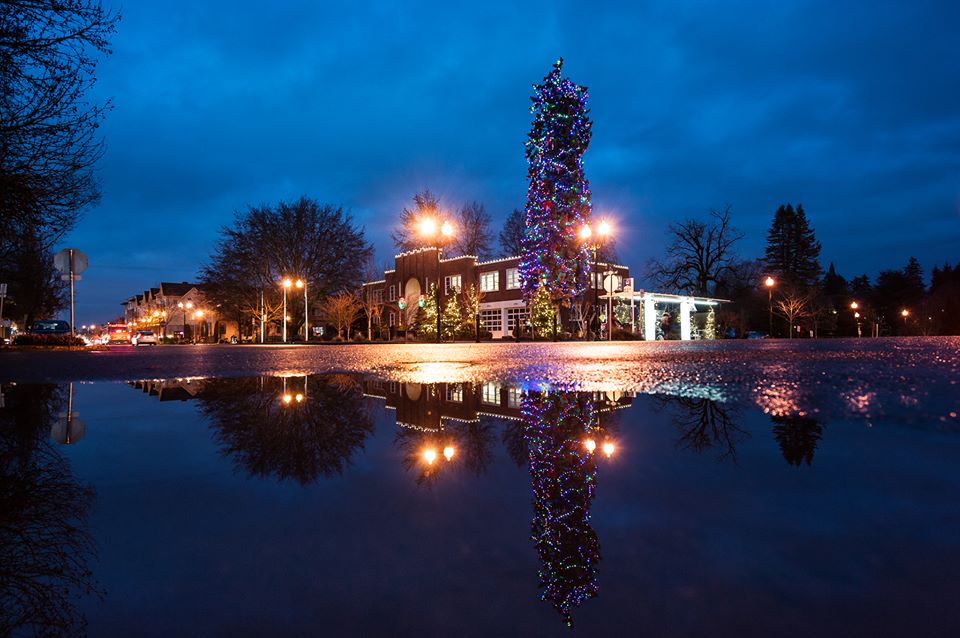
In this series, guest columnists respond to one of three topics selected by ELGL co-founder Kent Wyatt. This week Jordan Imlah, City of Milwaukie, Oregon Public Affairs Specialist, takes on the hotly debated topic of digital newsletter versus paper newsletter.
 One of the most enigmatic, yet seemingly straightforward, city communication tools is the newsletter. Most cities have them and use them in very similar ways, such as promoting programs and events, informing readers about projects and city-related news, soliciting feedback and involvement, etc. However, another similarity is the questions that most cities ask themselves about the newsletter—should we print the newsletter and send it to every address within city limits, and is it effective?
One of the most enigmatic, yet seemingly straightforward, city communication tools is the newsletter. Most cities have them and use them in very similar ways, such as promoting programs and events, informing readers about projects and city-related news, soliciting feedback and involvement, etc. However, another similarity is the questions that most cities ask themselves about the newsletter—should we print the newsletter and send it to every address within city limits, and is it effective?
I’ve worked for three cities in my career so far, and each organization has questioned whether to continue printing and mailing its newsletter. Typically, this question comes up around budget time. Postage and printing costs alone can be quite high, and in a time where so much content is delivered in a strictly digital format, it can seem like an obvious item to not include in a city’s budget. However, it’s a decision that shouldn’t be made too hastily.
Newsletters sent to each city address has tremendous value. It’s not often for community members to receive relevant printed news and information anymore through the mail. Usually its junk mail that ends up being recycled. Yet, newsletters that use good design technique, clear and concise writing and quality photos are often kept and read multiple times. According to a recent survey conducted by the City of Milwaukie, most residents got their city news from its newsletter. Milwaukie also sees a spike in emails and phone calls just after the newsletter hits mailboxes regarding topics residents and business have just read about. Not everyone gets their information about the city from social media, the city website or local news outlets. Additionally, as organizations tend to provide more digital content than printed content, a newsletter can become even more appealing to read because of its novelty.
At a budget committee meeting a couple years ago, the idea of switching to a digital-only format for the newsletter was raised. Several people were for the idea as a cost-saving measure until a new committee member in his late 20’s raised his hand and talked about how he and his wife loved receiving it the mail. The other cities where he’d lived previously had decided to cut it, which made his family feel a little less connected to the city. He also said it was just nice to get something from the city that wasn’t a bill.
This committee member touched on a newsletter’s greatest value, its ability to encourage and strengthen community bonds. It’s a direct connection that builds trust and awareness, which in turn, increases transparency. These elements build a foundation that encourages participation and engagement, and help the community feel more invested in their city’s future. While a digital newsletter posted online or delivered by subscription can have somewhat similar benefits, this more passive approach doesn’t have the same impact on those benefits.
To make your city’s newsletter as effective as possible, both in communication and cost, do some research. Find out which newsletter length works best for your community, have a graphic designer create a visually-appealing layout, color palette or header. Shop around for to get the most up-to-date printing costs. If you haven’t done this in a while, it can be surprising how low it can cost to print in color on high-quality paper. Look into your city’s demographics to learn which languages it should be translated into, or which age ranges it should appeal to. You can even speak to your co-workers about the advertisements and notifications they’re already mailing out to find ways to combine them into the newsletter to cut down on other printing and postage expenses.
Despite living in a digital, “paper-less” age, there is still incredible value in a tangible city newsletter that shouldn’t be overlooked. Making the effort to connect directly with your community members will not be lost on them. Sure, you might get the occasional comment that the newsletter makes great lining for a bird or hamster cage (two things I’ve actually been told), but most people will appreciate it. And, in the end, it will help create a more informed, engaged community who are enthusiastic about helping achieve the city’s shared goals.
